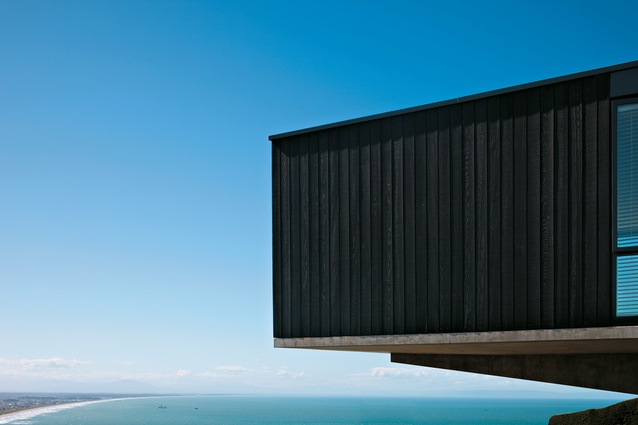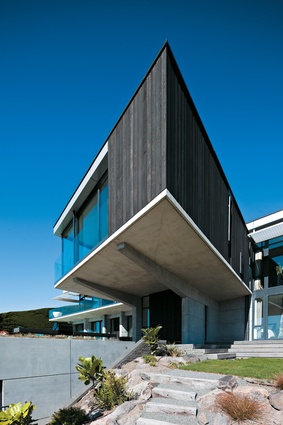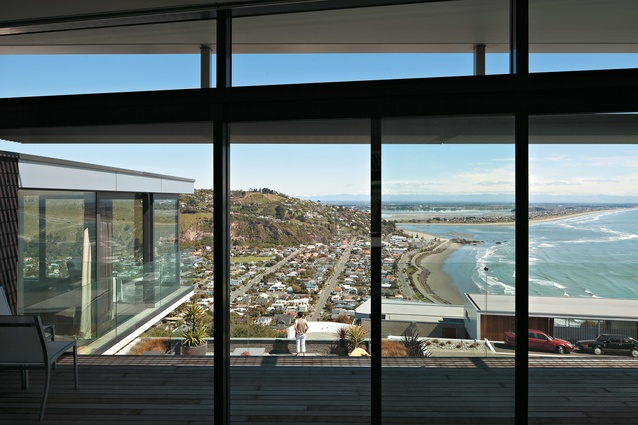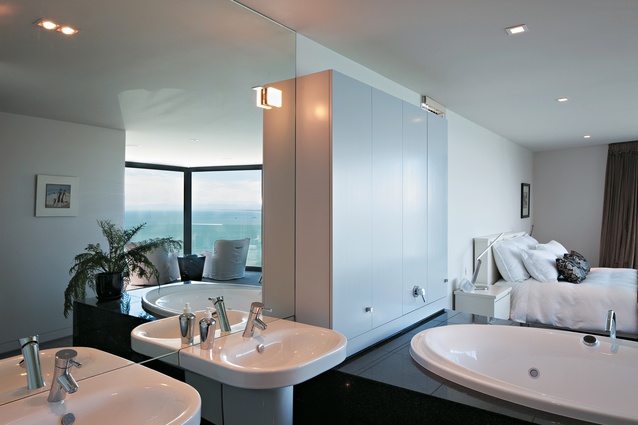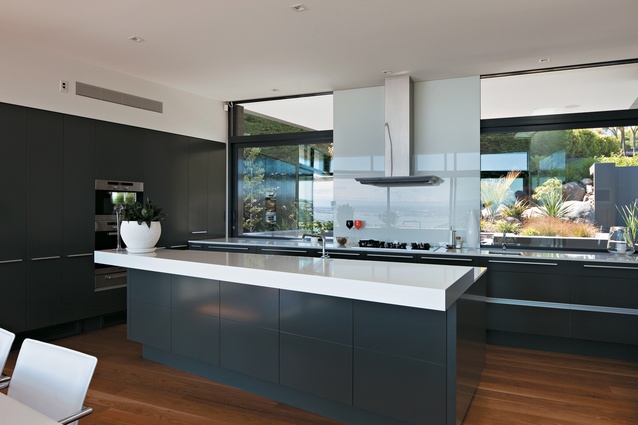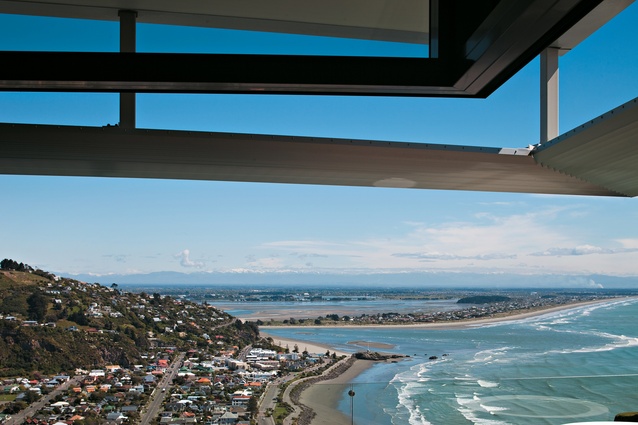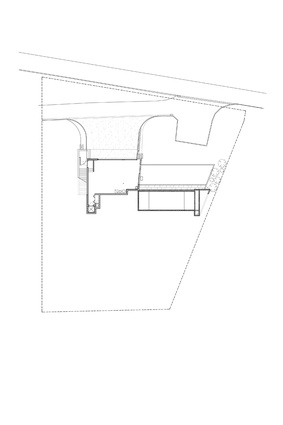Houses Revisited: Site shaper
Revisit a house on the heights above Christchurch suburb Sumner, where Wilson and Hill dug in to deliver a home out of the box.
More than any other New Zealand city, Christchurch is a place of vivid contradictions. Its comparative racial homogeneity coexists with an acute awareness of class and caste differences; its apparently ordered polity is regularly rent with acrimonious squabbles over development; its evident partiality to a well-tended herbaceous border is matched by its visceral sporting parochialism.
Its dress code oscillates between the poles of the anachronistic private school uniform and the bogan couture disported in the Square on Friday nights; and its eminently suburban way of life is interrupted by boy racers, Aryan bikers, and murderers who commit the country’s most baroque homicides. Agatha Christie would rejoice in the city’s narrative potential: contemporary Christchurch is St Mary Mead on P.
The juxtapositions that characterise the Christchurch mise-en-scène of course extend to architecture. Quite apart from the divide that exists between the city’s pre-Modern architects and their Modernist successors – between, as local architect and neo-Gothic advocate Peter Beaven would have had it, pre- and post-lapsarian Christchurch architecture – there are the divergent tendencies within the Modernist tradition.

The impact and influence of Miles Warren – early-career, 1960s Warren – are still discernible in Fendalton and Merivale, the affluent suburbs where the architect and, later, his imitators, designed rather modest, pitch-roofed, white-concrete-block neighbours for extant Victorian and Edwardian piles. A generation on, following a post-Modernist interregnum, another variant of Modernism gained rapid traction in Christchurch’s inner-west: the large monopitch box.
This architecture – and its imitators – has migrated across town to Sumner, where it is colonising Scarborough Hill. Another manifestation of the Christchurch dialectic: the heights above Sumner offer a maritime prospect to rival that of any Cycladic hill town. At Scarborough, nature has taken a hefty portion of the topographical credit generated by Christchurch’s extensive flatlands and expended it in a single splurge.
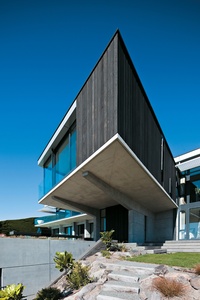
The name of the place might prompt aural memories of Simon and Garfunkel’s famous folk dirge, but Scarborough Hill is more properly the lyrical terrain of Alan Jay Lerner: on a clear day, you can see forever. Well, almost; the view reaches to the Southern Alps in the west and to the Kaikouras in the north, by way of the Estuary, Southshore Spit, and New Brighton beach. In the north-east, the Pacific Ocean is an infinity pool that blurs into the horizon.
So, the view’s the thing. People buy land on Scarborough Hill because it has one of the great New Zealand outlooks. When it comes to the next step – building – this strong and simple motivation can, understandably, lead inexorably to a certain kind of architectural response. A building intended to capture the view is, instead, captured by the view. Planning and programme become subservient to orientation; overwhelmed by the view, clients – and architects – can forget that a house is primarily for living in, not looking from.
Chris Wilson says he was conscious of this tendency when he came to design this house on one of the topmost sections on Scarborough Hill. The architect, a partner in Christchurch practice Wilson and Hill, sought to serve up the view in portions, not as one main course.
There is still a lot of view to be had – and the cantilever that is the house’s big design move provides the main bedroom with 180-degrees’ worth of clear gazing – but Wilson did not want to bequeath his clients a big glass viewing box. Instead, he has framed views, kinked the plan a little, broken up the space in a 400m2 house, attached the exterior louvres so that they have no visible means of support; it’s not genre-busting stuff, but the architect has added interest and complexity to a high level of competence.
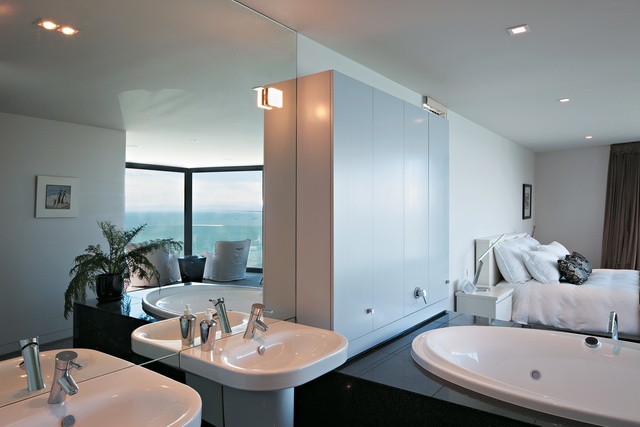
Where the house really succeeds is in its integration to its site. More than that, it has, to a considerable extent, shaped its site. Wilson says he wanted to design “a continuous landscape”, rather than a house that would read, and function, as a discrete object. Accordingly, the house has been set back – laboriously and expensively – into the basalt rock of the steep hillside.
Unlike many of the new houses on Scarborough Hill, this big house does not crowd its site. There’s a generous progress from the terrace at the front, with its landscaping and pool, into and up through the house – a lift makes the journey to the upper living level even smoother – and thence to the rear terrace and garden. (Wilson’s clients have taken a strong interest in the planning and hard landscaping of the site.)
The architect and his clients are rightfully grateful for the presence on the eastern boundary of a decades’ old macrocarpa hedge, a witness to Scarborough Hill’s former status as farmland. The hedge is a green wall against easterly winds, and also a sculptural element that, as it slashes down the slope, emphasises the dramatic fall on the site.
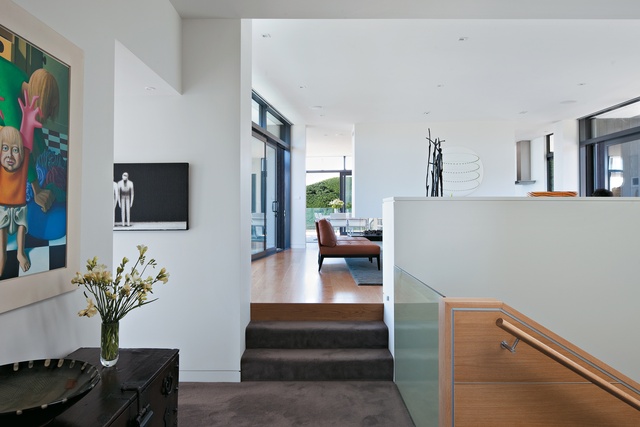
On this project Wilson also wanted to explore some ideas about arrival. A house on a hill site, he points out, is often approached from its underside, not its most flattering aspect. Here, Wilson has used the cantilever to lend a sense of occasion to the process of arrival. The hefty materiality of the house is declared to all who enter; the expressed concrete soffits have a monumental quality. (They like their concrete work in Christchurch and, as one supplier to this job learned, expect it be delivered in good condition.)
This is a solid house that sits securely on its steep site. It also seems to be the happy product of a relationship that started when the clients walked into Wilson and Hill’s office during an Architecture Week open day. A transparent process has resulted in a building that is not your usual view house.
This article first appeared in Houses magazine


